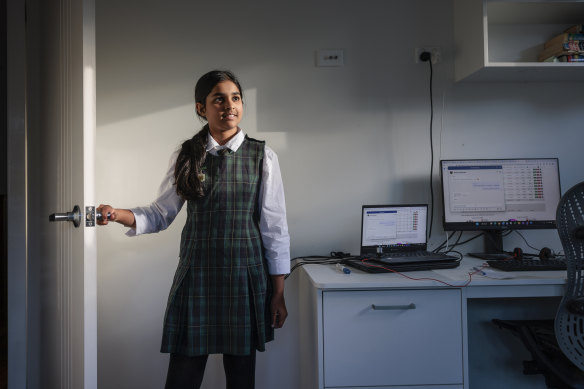- Exclusive
- National
- NSW
- Selective schools
This was published 1 year ago
The Sydney areas with the most selective school applicants
More than one-third of the thousands of students vying for selective school entry came from Sydney’s north and west last year, while less than 5 per cent of applicants lived in the city’s east, Sutherland Shire or other regional centres.
A record 17,000 students are expected to sit the high-stakes exam on Thursday, which will determine if they will receive an offer of entry to one of the 17 fully selective or 27 partially selective high schools in NSW.
New NSW Department of Education data highlights the geographical divide outside Sydney when it comes to selective school entry, with more students from the ACT applying than children from the Coffs Harbour region.
Only 257 students from the Central Coast applied last year, 96 students were from the Riverina and 65 were from the Hunter Valley.
A total of 6342 students, or more than one-third of all applicants, came from Sydney’s north and west. That area spanned Parramatta where 2022 children sat the test, nearby Ryde with 1468 students, and Blacktown with 1445 applicants. The north shore region stretching from North Sydney to Hornsby had 1407 students.
Australian Tutoring Association chief executive Mohan Dhall said the high concentration of applicants from those areas aligned with the location of the most-prized selective high schools.
“The aggregation of tutoring centres tends to be around Epping – it is where James Ruse is, there is Baulkham Hills High – you have a cluster of selective schools in the area where people are applying,” he said. “People move to the area with a view to getting into the school, I think they do plan very well in advance.”
There were only 402 applicants from the eastern suburbs and just 388 from the Sutherland Shire.
Dhall said those living east of Strathfield were more likely to opt for private school, while for cash-strapped parents in Sydney’s west, selective school was a limited opportunity to secure what was perceived as a superior education.
“If people are seeking to change their social setting and a private school is too expensive, then a high-achieving selective school would seem to be the best option,” he said.

Mani Beeram, 11, is sitting the selective school exam on Thursday.Credit: Brook Mitchell
Among those who will be sitting the test tomorrow will be Mani Beeram, 11, from Dundas Valley in Sydney’s north-west. Her father, Raghu Beeram, said he wanted his daughter to sit the test in the hope of getting into a high school with other smart children.
“When it comes to the HSC, I have been told the entire cohort needs to do well, to lift up the child’s scores,” he said.
Mani has enjoyed practising for the thinking skills component of the test but said she had been offered a place at a private school, so she wasn’t particularly daunted by the exam which will run from 9am to 1pm tomorrow.
“I am a bit nervous … but I am not as nervous as my friends. This is the moment that practically decides their lives,” she said.
The selective high school placement test has recently undergone significant changes – last year the previous government introduced its equity placement model, which set aside 20 per cent of places to children from low socio-economic backgrounds, Aboriginal students, those with a disability and students from rural and remote areas. In 2021, a thinking skills component was added to the test in a bid to make it less coachable. More places are expected to be made available after a new selective high school was slated for Leppington.
A plan to scrap pen and paper exams and take the test online was meant to come into effect in 2022 but it has been delayed until 2025. Overseas students will also be able to sit for the test after it is offered online.
Last year, 4248 places were available in selective high schools across NSW for entry to Year 7 in 2023.
University of NSW gifted education Associate Professor Jae Yup Jung said parents in different parts of Sydney had different social and cultural attitudes. He said parents of gifted children in regional parts of the state might not even be aware selective school is an option.
“I am sure there will be many students who might not even have considered selective schools,” he said.
He was supportive of the equity model adopted last year but said another option to identify more gifted children could be to use NAPLAN results or another assessment which every student in the state completed, not simply those who sat the test.
The Morning Edition newsletter is our guide to the day’s most important and interesting stories, analysis and insights. Sign up here.